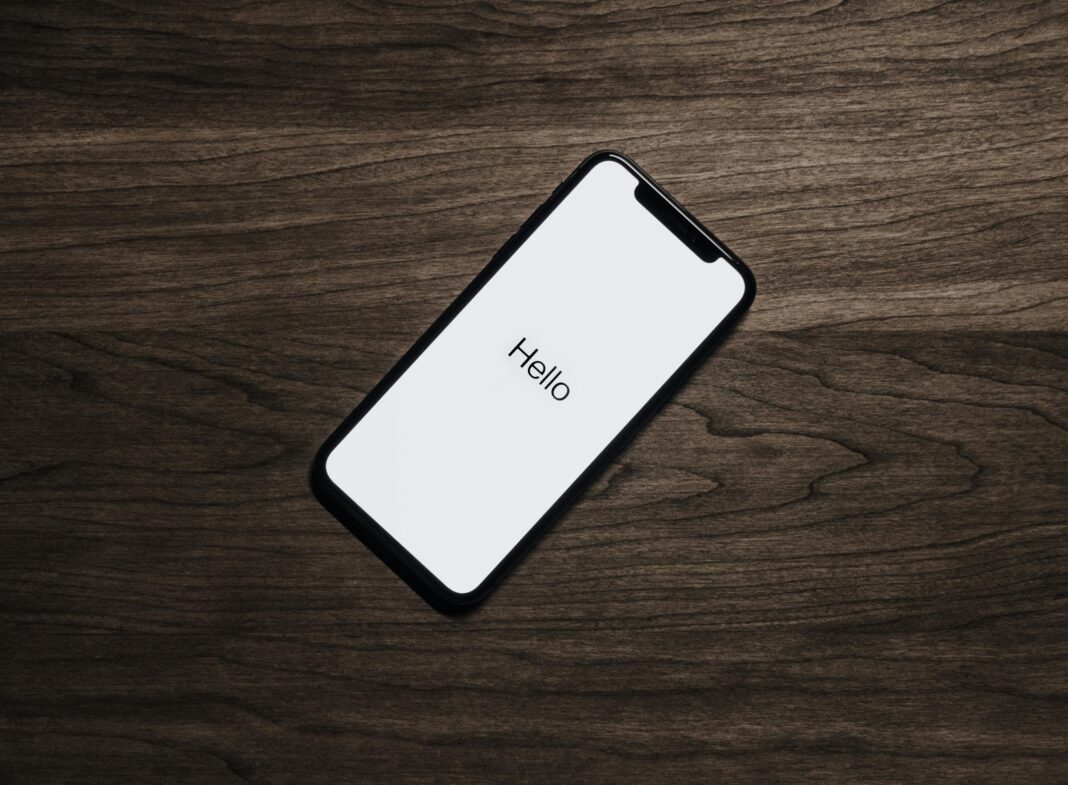Voice User Interfaces (VUIs) are no longer a futuristic concept—they are here, reshaping how we interact with technology. From asking a smart speaker for the weather to dictating messages while driving, VUIs simplify daily tasks and redefine accessibility. But where is this technology headed? What challenges must be overcome? And how can businesses and individuals prepare for a world where voice commands dominate?

This in-depth guide examines every aspect of VUIs, from their underlying technology to real-world applications, limitations, and future advancements. We’ll also explore how industries are adapting and what users should expect in the coming years.
How Voice User Interfaces Work: Breaking Down the Technology
At their core, VUIs rely on a combination of speech recognition, natural language processing (NLP), and machine learning. Understanding these components helps clarify why some systems succeed while others struggle.
1. Speech Recognition: Converting Sound into Text
When you speak to a device, the first step is converting your voice into a digital signal. This process involves:
- Acoustic Modeling: Matching sound waves to phonemes (distinct units of sound).
- Language Modeling: Predicting word sequences to improve accuracy.
- Noise Reduction: Filtering background sounds to isolate speech.
Modern systems like Apple’s Siri and Microsoft’s Cortana use deep neural networks to refine this process, reducing errors even in noisy environments.
2. Natural Language Processing (NLP): Understanding Meaning
Once speech is transcribed, NLP takes over to interpret intent. Key functions include:
- Intent Recognition: Determining what the user wants (e.g., playing music vs. setting a reminder).
- Entity Extraction: Identifying key details (e.g., “Call Mom” vs. “Call David”).
- Context Awareness: Remembering previous interactions for smoother conversations.
For example, if you ask, “What’s the weather in Tokyo?” followed by, “What about tomorrow?”, the system knows to provide a forecast for Tokyo without repetition.
3. Machine Learning: Continuous Improvement
VUIs learn from user behavior. Over time, they:
- Adapt to speech patterns (e.g., recognizing a user’s accent).
- Personalize responses (e.g., suggesting frequently used apps).
- Correct errors based on feedback (e.g., rephrasing misunderstood commands).
4. Voice Synthesis: Making Responses Sound Natural
Early voice assistants sounded robotic, but advances in text-to-speech (TTS) now produce lifelike voices. Techniques include:
- Concatenative Synthesis: Stitching recorded speech snippets together.
- Parametric Synthesis: Generating speech from scratch using algorithms.
- Emotional Inflection: Adjusting tone to sound cheerful, serious, or empathetic.
Google’s WaveNet and OpenAI’s Whisper are pushing boundaries, creating voices that are nearly indistinguishable from humans.
Current Applications of VUIs: Where They’re Being Used Today
VUIs have moved beyond novelty status—they’re now embedded in critical industries. Here’s how they’re being utilized:
1. Smart Homes and IoT Integration
Voice-controlled devices like Amazon Echo and Google Nest centralize home automation. Users can:
- Adjust thermostats (e.g., “Set the temperature to 72 degrees”).
- Control lighting (e.g., “Turn off the bedroom lights”).
- Manage security systems (e.g., “Lock the front door”).
These systems are becoming more proactive, suggesting energy-saving measures or alerting users to unusual activity.
2. Customer Service and Support
Businesses deploy VUIs to:
- Handle FAQs without human agents.
- Process returns or track orders via voice.
- Provide 24/7 support in multiple languages.
For instance, Bank of America’s Erica assists with balance checks, bill payments, and fraud alerts, reducing call center loads.
3. Healthcare and Medical Assistance
Voice tech is revolutionizing healthcare by:
- Transcribing doctor-patient conversations in real time.
- Reminding patients to take medication.
- Assisting surgeons with hands-free data retrieval during procedures.
Suki AI, for example, helps clinicians document visits using natural speech, cutting administrative time by 50%.
4. Automotive and In-Car Systems
Modern vehicles integrate VUIs for:
- Navigation (“Find the nearest gas station”).
- Entertainment (“Play my road trip playlist”).
- Vehicle diagnostics (“Check tire pressure”).
BMW’s Intelligent Personal Assistant even learns driver preferences, like seat positioning and frequent destinations.
5. Accessibility for People with Disabilities
VUIs empower users with:
- Visual impairments (e.g., screen readers controlled by voice).
- Mobility challenges (e.g., smart home control without physical buttons).
- Speech disorders (e.g., devices that adapt to atypical speech patterns).
Microsoft’s Seeing AI app narrates the world for blind users, describing objects, text, and even emotions.
Challenges and Limitations of VUIs
Despite progress, several hurdles hinder widespread adoption.
1. Privacy and Data Security Risks
- Always-On Microphones: Devices like Alexa record snippets even when not in use, raising eavesdropping concerns.
- Data Breaches: Hackers could exploit voice data for impersonation or fraud.
- Lack of Transparency: Users often don’t know how their data is stored or shared.
Solutions:
- Local processing (e.g., Apple’s on-device Siri).
- Clear opt-in/opt-out policies.
- End-to-end encryption for voice data.
2. Accent and Dialect Recognition Gaps
VUIs frequently misinterpret:
- Non-native English speakers.
- Regional accents (e.g., Southern U.S. vs. Scottish English).
- Slang or colloquial phrases.
Solutions:
- Diversifying training datasets with global voices.
- Allowing users to “train” their assistant (e.g., repeating phrases for calibration).
3. Background Noise Interference
Crowded spaces or poor audio quality lead to errors like:
- Misheard commands (e.g., “Call Dad” vs. “Call Pat”).
- False triggers (e.g., a TV ad activating a smart speaker).
Solutions:
- Beamforming microphones that focus on the user’s voice.
- AI that distinguishes between human speech and ambient noise.
4. Limited Context Retention
Most VUIs struggle with:
- Multi-step requests (e.g., “Book a flight, then reserve a hotel near the airport”).
- Follow-up questions requiring deep context.
Solutions:
- Advanced NLP models like GPT-4 for better conversation flow.
- User-defined shortcuts for complex routines.
The Future of VUIs: What’s Coming Next?
1. Emotion and Tone Detection
Future systems will analyze vocal cues (e.g., pitch, speed) to detect:
- Frustration (offering quicker solutions).
- Fatigue (suggesting breaks).
- Excitement (responding with enthusiasm).
2. Multilingual and Code-Switching Support
Expect VUIs that:
- Switch seamlessly between languages mid-sentence.
- Understand mixed-language phrases (e.g., Spanglish).
3. Proactive and Predictive Assistance
Instead of waiting for commands, VUIs will:
- Suggest actions based on routines (e.g., “Leave early—traffic is heavy”).
- Automate tasks (e.g., ordering groceries when supplies run low).
4. Integration with Augmented Reality (AR)
Voice will control AR glasses for:
- Real-time translations during travel.
- Hands-free navigation with visual cues.
5. Enterprise and Industrial Uses
Factories and offices will adopt VUIs for:
- Inventory management (“How many units are in Warehouse B?”).
- Training (“Show me the safety protocol for Machine X”).
FAQs About Voice User Interfaces
1. Will VUIs replace screens and keyboards?
No—they’ll complement them. Voice is ideal for quick tasks, while typing remains better for precision.
2. How can I protect my privacy with voice assistants?
- Review and delete voice recordings regularly.
- Disable always-listening modes when not needed.
3. Why does my voice assistant misunderstand me?
Background noise, uncommon accents, or unclear speech can cause errors. Try speaking slower or retraining the model.
4. Which industries benefit most from VUIs?
Healthcare, retail, automotive, and customer service see the biggest efficiency gains.
5. When will VUIs sound completely human?
Within 5–10 years, thanks to advances in AI-generated speech.
Final Thoughts
Voice User Interfaces are evolving from simple tools to indispensable assistants. While challenges like privacy and accuracy persist, ongoing innovations in AI and machine learning promise a future where talking to technology feels as natural as speaking to a friend. Businesses that integrate VUIs now will lead their industries, while users can look forward to more intuitive, personalized interactions.

